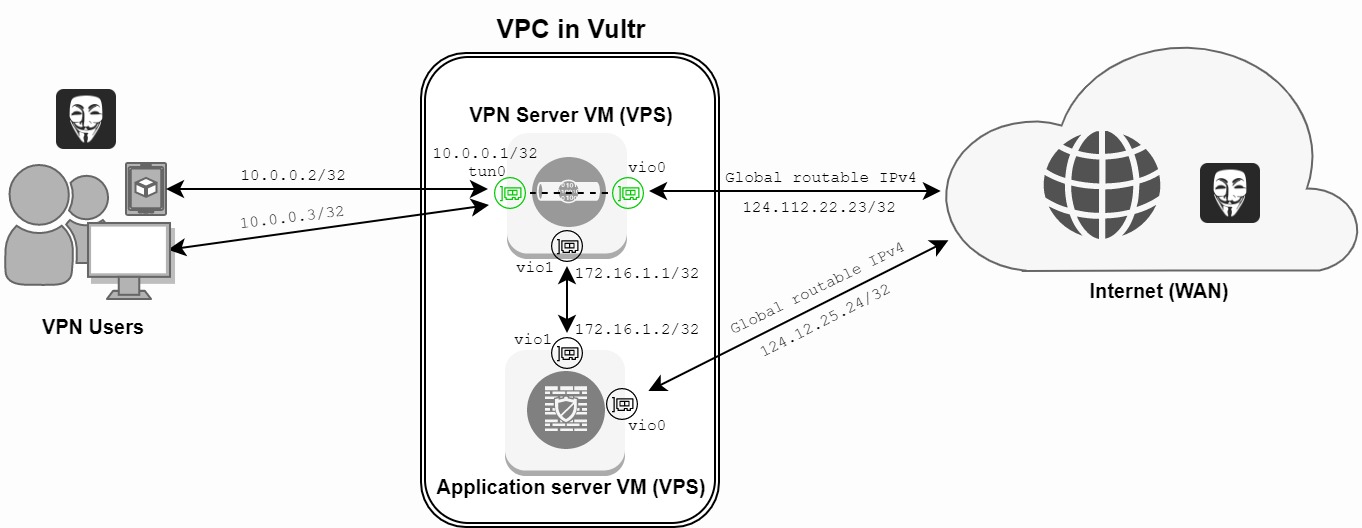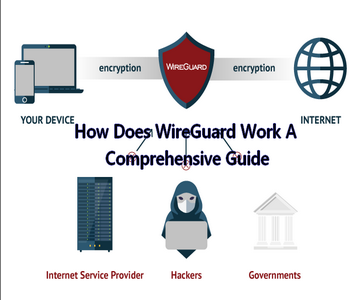Key Concepts of WireGuard
Understanding the WireGuard Protocol
The WireGuard protocol is a modern virtual private network (VPN) protocol that aims to provide improved security, performance, and simplicity compared to traditional VPN protocols. It operates at the network layer, allowing users to securely connect their devices over both private and public networks.
One of the key concepts of the WireGuard vpn protocol is its simplicity. Unlike other VPN protocols that rely on complex configurations and multiple authentication methods, WireGuard uses a streamlined and minimalistic approach. It leverages cryptography to provide secure communication channels between devices, ensuring that data is encrypted and protected from unauthorized access.
Another important aspect of the WireGuard free protocol is its efficiency. It is designed to minimize the overhead and computational costs associated with establishing and maintaining VPN connections. This results in faster connection speeds and lower resource usage, making WireGuard suitable for various use cases, including mobile devices and low-powered devices.
Understanding WireGuard Security Model
The WireGuard protocol implements a strong security model to ensure the privacy and integrity of transmitted data. It uses state-of-the-art cryptographic algorithms and techniques, including noise protocol framework and elliptic-curve cryptography, to establish secure connections between devices.
One key concept of the WireGuard security model is the use of private and public key pairs. Each device in a WireGuard network is assigned a unique pair of keys. The private key is kept secret and is used to authenticate the device, while the public key is shared with other devices to establish secure connections.
WireGuard also implements perfect forward secrecy, ensuring that even if one key is compromised, future sessions remain secure. Additionally, it supports end-to-end encryption, meaning that data is encrypted at the source device and decrypted at the destination device, preventing any unauthorized access during transmission.
Overall, understanding the key concepts of the WireGuard protocol and its security model can help users make informed decisions about adopting this modern VPN solution. Its simplicity, efficiency, and strong security measures make WireGuard a promising choice for secure and reliable network connectivity.

WireGuard Installation and Configuration
Installing WireGuard on different platforms
WireGuard is available for various platforms, making it accessible and versatile for users. Here's a comprehensive guide on how to install WireGuard on different platforms:
-
Linux: WireGuard is natively supported in the Linux kernel. Users can install WireGuard by enabling the appropriate modules and configuring the network interface. Detailed installation instructions are available in the official WireGuard documentation.
-
Windows: To install WireGuard on Windows, users can download the WireGuard installer from the official website and follow the installation wizard. The installer will install the necessary dependencies and set up the WireGuard interface.
-
macOS: WireGuard can be installed on macOS using a third-party application called TunSafe. Users can download TunSafe from the official website and follow the installation instructions to set up WireGuard on their macOS devices.
-
Android: WireGuard can be installed on Android devices by downloading the official WireGuard app from the Google Play Store. Users can then follow the app's instructions to configure and connect to a WireGuard VPN server.
-
iOS: On iOS devices, users can install the WireGuard app from the App Store. Once installed, users can configure WireGuard by importing the server configuration file or manually entering the details provided by the VPN server administrator.
Configuring WireGuard for server and client
Configuring WireGuard involves setting up both the server and client sides. Here are the basic steps to configure WireGuard:
-
Server: On the server side, users need to generate a private and public key pair. These keys are used to authenticate the server and establish secure connections with client devices. The server administrator can then configure the WireGuard interface, assign IP addresses to clients, and set up firewall rules to allow traffic.
-
Client: On the client side, users need to generate a private and public key pair as well. The client's public key is shared with the server administrator to establish a secure connection. The user can then configure the WireGuard interface on their device, enter the server details, and connect to the VPN server.
Overall, the installation and configuration process of WireGuard is relatively straightforward and well-documented. Users can refer to the official documentation and follow the platform-specific instructions to set up WireGuard and enjoy its benefits of improved security, performance, and simplicity in their VPN connections.

WireGuard Architecture
WireGuard Kernel Module
The foundation of the WireGuard architecture is the WireGuard kernel module. This module is responsible for handling the encryption and decryption of network packets. It operates at the kernel level, allowing for efficient and secure communication between the client and server. With its lightweight design, the WireGuard kernel module provides fast and reliable performance, making it suitable for a wide range of applications.
The key feature of the WireGuard kernel module is its simplicity. Unlike other VPN protocols, WireGuard utilizes a minimal amount of code, making it easier to understand, audit, and maintain. This simplicity also contributes to its exceptional speed and efficiency, ensuring that network traffic flows smoothly and without delay.
WireGuard Userspace Tools
In addition to the kernel module, WireGuard also includes a set of userspace tools. These tools are used for configuration and management of WireGuard connections. They provide a straightforward interface for users to create, modify, and monitor their VPN settings.
The userspace tools enable users to set up and configure WireGuard interfaces, generate private and public keys, manage peer configurations, and monitor the status of connections. These tools are available for various platforms, including Linux, Windows, macOS, Android, and iOS, ensuring compatibility and ease of use across different devices.
The combination of the WireGuard kernel module and userspace tools creates a powerful and intuitive VPN solution. The kernel module handles the encryption and decryption of network packets, while the userspace tools provide a user-friendly interface for easy configuration and management. This architecture allows users to enjoy the benefits of WireGuard's speed, security, and simplicity, making it an excellent choice for both individuals and organizations seeking a reliable VPN solution.
By incorporating the WireGuard architecture into their network infrastructure, users can experience enhanced network security, improved performance, and simplified VPN management. Whether it's for personal use or enterprise applications, WireGuard offers a streamlined and efficient approach to secure network communications.

WireGuard Encryption and Authentication
Understanding WireGuard Encryption
WireGuard utilizes state-of-the-art encryption algorithms to ensure the confidentiality and integrity of network communication. It employs the Noise protocol framework, which combines Curve25519, ChaCha20, Poly1305, BLAKE2s, and the SipHash24 hash function. This robust combination provides strong encryption, authentication, and key exchange mechanisms.
The encryption process in WireGuard involves the use of symmetric encryption, where a shared secret key is used to encrypt and decrypt data. This approach offers efficient and fast encryption, minimizing the computational load on the devices involved in the communication.
WireGuard uses AEAD (Authenticated Encryption with Associated Data) construction for data encryption. This means that each packet is encrypted and authenticated, ensuring that data remains confidential and unmodified during transit. The authentication process verifies the integrity of the packets, protecting them from unauthorized modification and tampering.
Key Exchange and Authentication
WireGuard employs a secure and efficient key exchange protocol called the Noise protocol framework. This protocol allows devices to securely establish a shared secret key without the risk of interception or eavesdropping.
During the key exchange process, both the client and server generate an ephemeral Diffie-Hellman key pair. These key pairs are used to compute a shared secret key that is unique to the specific session. The shared secret key is then used as the basis for symmetric encryption and authentication.
In addition to key exchange, WireGuard also provides robust authentication mechanisms. Each peer in a WireGuard connection has a public key associated with it. This public key is used to authenticate and verify the identity of the peers involved in the communication. By ensuring the authenticity of the peers, WireGuard protects against impersonation and man-in-the-middle attacks.
The combination of strong encryption, efficient key exchange, and robust authentication makes WireGuard a highly secure and reliable VPN solution. It ensures the confidentiality, integrity, and authenticity of network communication, providing users with peace of mind when transmitting sensitive data over the internet.







